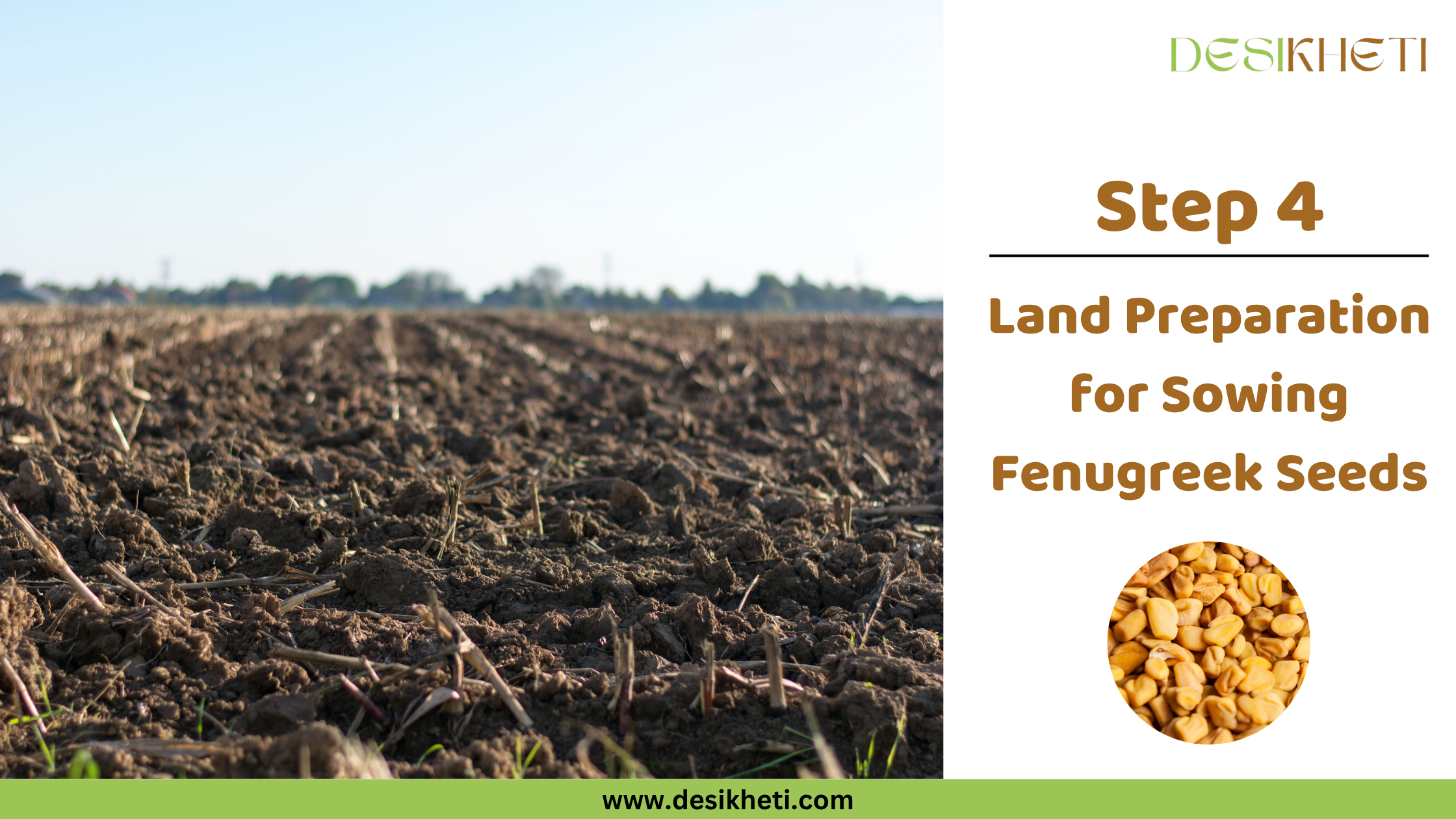Table of Contents
Introduction
Fenugreek, commonly known as methi (Trigonella foenum-graecum), is a versatile and valuable crop widely cultivated across India, especially in Gujarat and Rajasthan. Its fresh tender leaves and stems are used as a nutritious vegetable, while its seeds serve as a popular spice with high medicinal value aiding digestion, stimulating the spleen and liver, and preventing constipation.
Whether used fresh, dried, or as seeds, fenugreek holds an irreplaceable place in Indian kitchens and herbal medicine. Interested in growing your own methi? Here’s how you can sow fenugreek easily in just 7 simple steps!

Step 1: Climate, Soil, and Season for Sowing Fenugreek Seeds

Climate for Fenugreek Cultivation
Fenugreek can be grown in both tropical and temperate climates. It is primarily a cool-season crop, and cool, dry weather conditions are preferable. Temperatures ranging from 10°C to 27°C are suitable for its cultivation. Fenugreek can withstand light frost; however, frost during the flowering and grain-filling stages can adversely affect the crop. Excessive rainfall is also not suitable for fenugreek cultivation.
Soil for Fenugreek Cultivation
Fenugreek grows best in well-drained clayey loam soils with good organic matter. The ideal soil pH ranges from 5.5 to 7.0. Strongly acidic and alkaline soils are not suitable for its growth.
Season for Fenugreek Cultivation
Fenugreek is mainly sown during the rabi season. Generally, seeds are sown in the months of October and November. In some regions, fenugreek is also sown during the months of June and July.
Step 2: Selecting the Right Fenugreek Variety

Select a variety based on factors such as climate, region, season, etc. A few fenugreek varieties are listed below for your convenience.
Step 3: Procuring Quality Fenugreek Seeds

For successful fenugreek farming, selecting high-quality seeds is essential. Even with the best cultivation practices, poor-quality seeds can lead to low yields and weak plant health. Looking for the best fenugreek seeds? DesiKheti offers a wide range of quality fenugreek seeds tailored to your farming needs. Browse our collection, place your order online, and have it delivered to your doorstep.
Step 4: Land Preparation for Sowing Fenugreek Seeds

Plough the land 3 to 4 times. Apply 25 to 35 tonnes of FYM per hectare during the final ploughing. After ploughing, the field should be leveled, and uniform beds should be prepared to facilitate proper drainage and seed placement.

Step 5: Sowing Fenugreek Seeds

Broadcast the seeds uniformly over the beds. The seeds can also be dibbled in lines at a spacing of 60 x 30 cm. The spacing may vary based on preference. Seeds can be sown at a depth of 3 to 4 cm. Generally, broadcasting is done in rainfed conditions, while dibbling is preferred in irrigated conditions.
Step 6: Care After Sowing Fenugreek Seeds

Water Management:
The first irrigation is given immediately after sowing, followed by the second irrigation on the 3rd day after sowing. Subsequent irrigations can be given at 7–10 day intervals, depending on soil moisture. Fenugreek is also grown as a rainfed crop in heavy, moisture-retentive soils.
Weed Management:
2 to 3 weddings can be done to manage weeds. At least one weeding should be done within the first 20 to 30 days after sowing fenugreek seeds, depending on weed intensity.
Step 7: Harvesting Fenugreek

For green leaf purposes, the first cutting of fenugreek leaves can be harvested 20–25 days after sowing, followed by subsequent cuttings every 12–15 days. Typically, 4–5 cuttings are taken before the plants are uprooted at the flowering stage.
For grain purposes, harvesting can be done around 90 days after sowing when the plant begins to dry and the pods are partially dry. 1 to 2 leaf harvests can also be done in the initial stages of plant growth; however, excessive leaf harvesting can reduce grain yield.

Common FAQs Related to Fenugreek Seed Sowing
Q. What climate is best for growing fenugreek?
A. Fenugreek prefers cool and dry weather, with temperatures ranging between 10°C and 27°C.
Q. Which soil is best for growing fenugreek?
A. Fenugreek grows best in well-drained clayey loam soils rich in organic matter. The ideal soil pH ranges from 5.5 to 7.0. Strongly acidic or alkaline soils are not suitable for fenugreek cultivation.
Q. When can fenugreek be harvested?
A. Fenugreek can be harvested 20–25 days after sowing for green leaves. For grain purposes, harvesting typically occurs around 90 days after sowing when the plant begins to dry and the pods are partially dry.
Q. How deep can fenugreek be sown?
A. Fenugreek seeds needs to be sown at a depth of 3 to 4 cm.
Q. What is the scientific name of fenugreek?
A. The scientific name of fenugreek is Trigonella foenum-graecum.

Join DesiKheti Whatsapp Channel for regular updates, farming tips, and information on agriculture.
